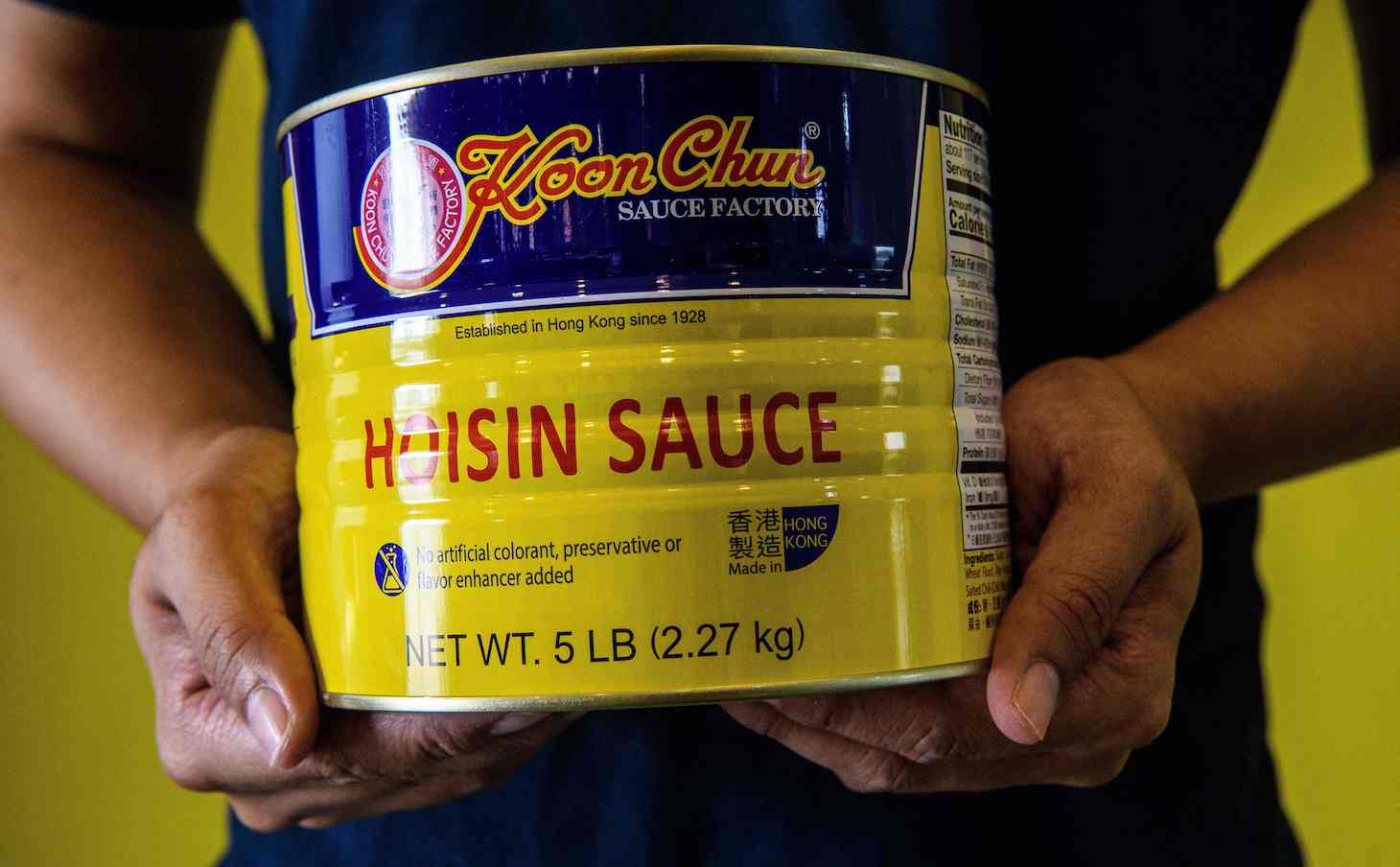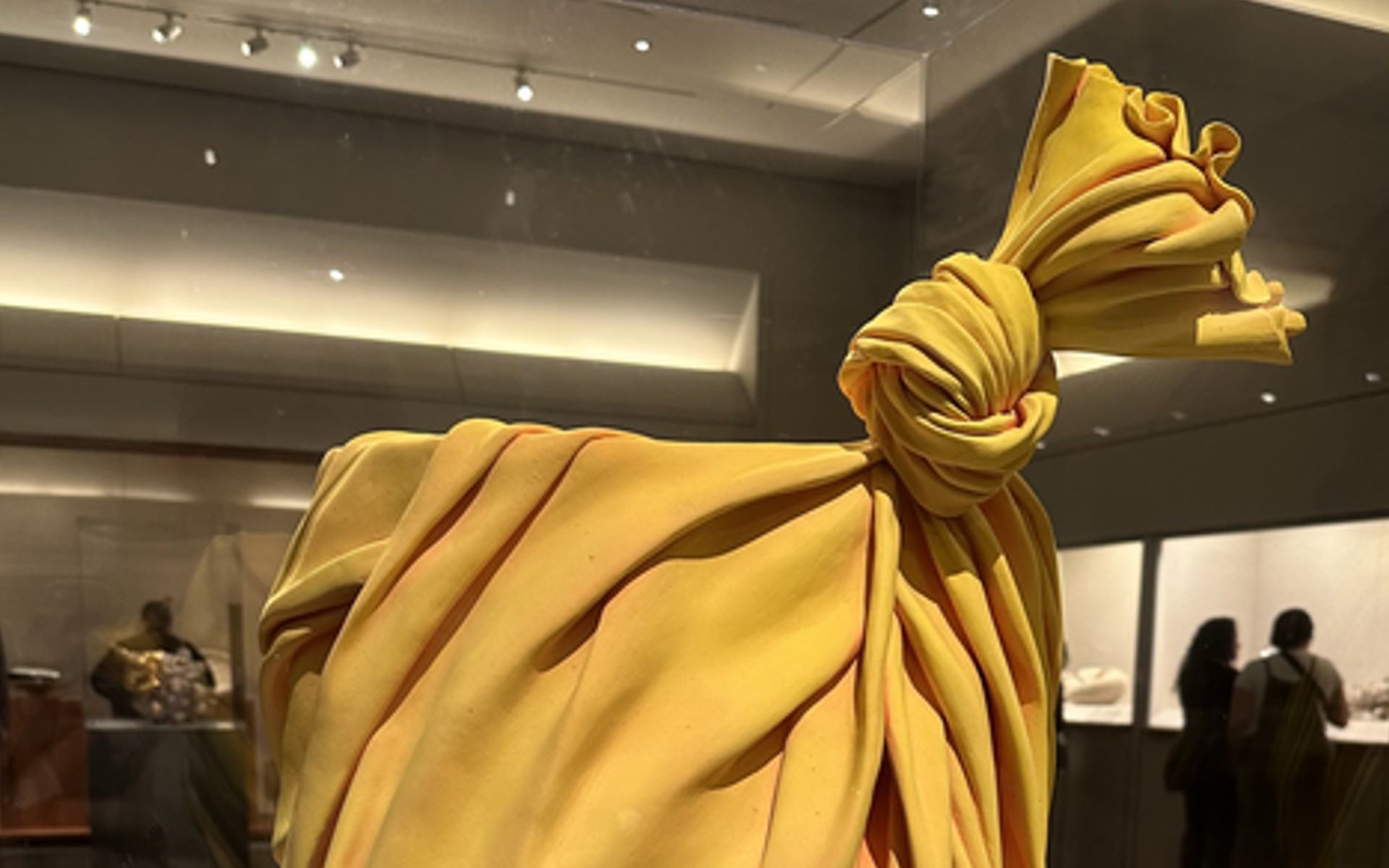Hoisin Sauce And Me: A Love Story
3:13 PM EST on March 5, 2021

This is a story that begins, as all good stories do, with moo shu pork. When I was very young, my parents took me and my siblings to a Chinese restaurant. This was the old school kind of Chinese joint: white paper tablecloths, big lazy Susan in the center of the table, a tiny but bottomless cup of green tea for everyone, etc. My folks did all the ordering for us, because we had no fucking idea what Chinese food entailed. My mom had favorites, and you’ll probably recognize the bulk of them: dumplings, egg rolls, Mongolian beef, chicken with cashews, and moo shu pork. My parents pronounced it “moo-shee” pork at the time, and I carried that pronunciation with me for years after that, until I heard it pronounced the right way enough times that I organically course-corrected.
But what I also carried with me was the hoisin sauce.
Every food in every restaurant is a production now, so the customs of moo shu anything aren’t exactly a revelation to modern diners. But for grade-school me, those customs were fucking mind-blowing. The waiters (more than one!) arrived at the table with a stack of warmed plates, a bamboo steamer basket of fresh pancakes, a platter of the namesake pork, and a glass jar of brown sauce.
“Oh, that’s the duck sauce,” my mom said with great zeal. She got the name of the sauce wrong, but her zeal was warranted.
Now came the important part. Working quickly, one of the waiters made a moo shu pancake for everyone at the table. He grabbed a plate, peeled a pancake off the stack, gave it a schmear of the hoisin, topped it with the pork, and wrapped it up, USING THE SPOONS to do so. No barehanding it. Then he offered me a plate and I took a bite. That was it. I was done.
For the rest of my childhood, I cried out MOOSHEE MOOSHEE MOOSHEE anytime we went out for Chinese. When my folks and one of their best friends took us to the Peking Duck House in Chinatown—which is still standing—I got to watch the sacred moo shu ritual performed not with shredded pork but with succulent medallions of lacquered duck instead. The waiter made sure to tuck an extra piece of skin, along with a single scallion flawlessly cut into a brush, inside every pancake. And, of course, he included the hoisin too.
I could never get enough hoisin sauce. The catch was that, for DECADES after my introduction, I still thought it was called “duck sauce.” So whenever I ordered takeout, I would plead for “extra duck sauce” and pay the ultimate white diner penalty for my ignorance. Whatever hoisin I did get with my order I cherished with demented fervor. I swabbed the goddamn plastic cup with my pancake to make sure none of the vital sauce went neglected. Until I was 40, I scoured the grocery store aisle trying to find hoisin without knowing its proper name. I knew it wasn’t duck sauce. Was it oyster sauce? It was not. When I finally learned the proper name, I felt like I had just won a thousand bucks.
Everyone has flavors that linger eternally in their memory. Hoisin sauce is one of mine. The arc of my lifetime roughly parallels the rise of Americanized Chinese cuisine, except that my folks got in on the action relatively early thanks to their experience as New Yorkers (they lived there with my brother and sister before I was born) and their experiences traveling abroad. Whenever we ate Chinese food back then, I thought I was getting in on something that none of my friends knew about. Chinese food was like hidden treasure to me, with dumplings and hoisin sauce being the shiniest baubles crowning the motherlode.
I still feel that excitement whenever I eat hoisin sauce today, and I eat it often. One time I found a one-pound bottle of the shit at a nearby H-Mart and nearly fainted in the dead center of the aisle. Now, hoisin sauce is INCREDIBLY bad for you (the one in my fridge right now is 45 calories per tablespoon), but that’s why it works. It adds an extra layer of impossible richness to foods that are already impossibly rich. Hoisin doesn’t work on EVERY food, the way something like Frank’s might. I don’t put hoisin sauce on, like, a ham sandwich. But when I do put it on the right food, and it hits the intended sweet spot, I get blasted right back into the early '80s, with lazy Susans spinning and waiters deftly folding pancakes and my place setting spattered in fat sauce blotches.
I have not seen my parents since July of last year. They have since been vaccinated. This week, my mom and I made plans for them to come down to our house a month from now. When I hung up the phone after that call, I cried a little. My parents are still alive, and so am I. Maybe we’ll celebrate with a little mooshee for takeout. You better fucking believe I’ll know which extra sauce we’ll be needing on the side.
If you liked this blog, please share it! Your referrals help Defector reach new readers, and those new readers always get a few free blogs before encountering our paywall.
Columnist. Author of many fine works of literature, including Point B. Handsomest man in the world.
Read More:
Stay in touch
Sign up for our free newsletter




